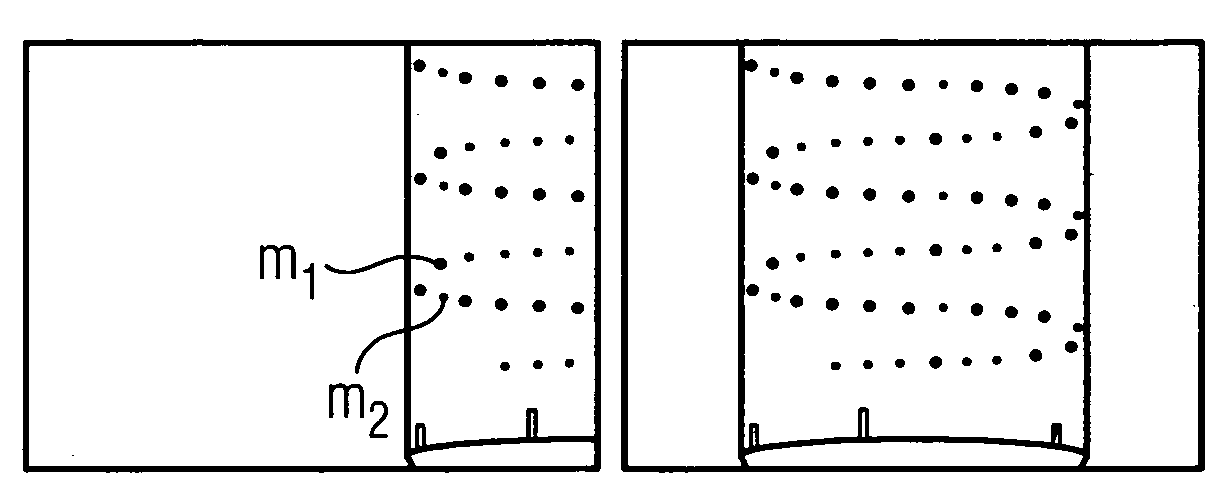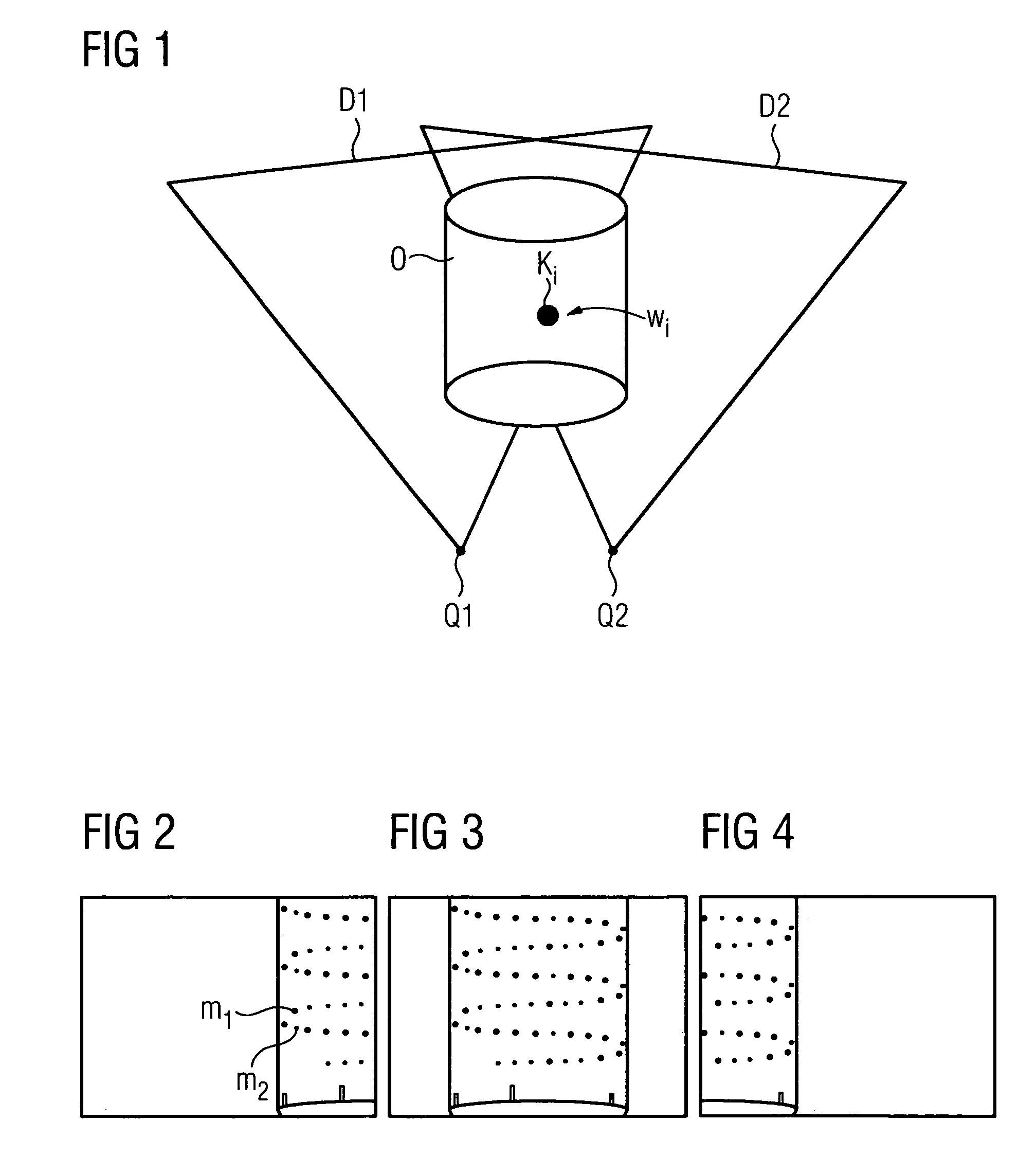Method for determining an imaging rule and method for generating a 3D reconstruction
a 3d reconstruction and imaging rule technology, applied in the direction of tomography, material analysis using wave/particle radiation, instruments, etc., can solve the problems of calibration phantom, inability to determine imaging rules at any position of imaged components as required, and inability to determine imaging rules
- Summary
- Abstract
- Description
- Claims
- Application Information
AI Technical Summary
Benefits of technology
Problems solved by technology
Method used
Image
Examples
Embodiment Construction
[0035]DE 10 2006 041033.5 describes how two different X-ray images are taken, which together cover the body, for the generation of a 3D reconstruction of a particularly large body, which cannot be imaged by a single projection. The X-ray detector is tilted between the taking of the two X-ray images. Basically, it is assumed that the X-ray radiation source remains at the same location, but this can also move in an actual radiographic imaging system. DE 10 2007 026 115.4 deals with the latter case and this is also shown in FIG. 1. In this case, an X-ray radiation sources Q1 radiates X-ray radiation on to an X-ray detector D1 and in a second position the X-ray source Q1 has moved to a point different from the X-ray source Q2, and the detector D1 has moved in a different plane and is therefore designated as D2. The method according to DE 10 2007 026 115.4 requires an imaging rule for the imaging of points in the 3D space on points in a 2D X-ray image, i.e. on the detectors D1 and D2. No...
PUM
 Login to View More
Login to View More Abstract
Description
Claims
Application Information
 Login to View More
Login to View More - R&D
- Intellectual Property
- Life Sciences
- Materials
- Tech Scout
- Unparalleled Data Quality
- Higher Quality Content
- 60% Fewer Hallucinations
Browse by: Latest US Patents, China's latest patents, Technical Efficacy Thesaurus, Application Domain, Technology Topic, Popular Technical Reports.
© 2025 PatSnap. All rights reserved.Legal|Privacy policy|Modern Slavery Act Transparency Statement|Sitemap|About US| Contact US: help@patsnap.com



